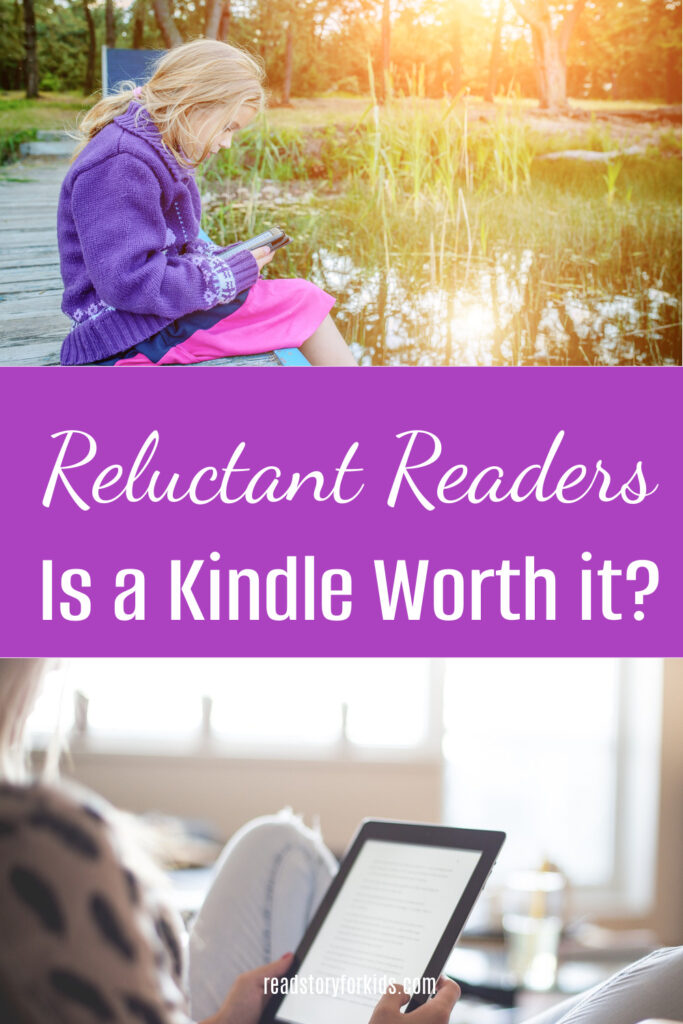As a parent, one of my greatest joys is watching my children discover the world through books.
However, getting them to pick up a book wasn’t always easy.
I vividly remember the struggle with my youngest, who just couldn’t seem to find the magic in reading that her older siblings had.
It wasn’t that she couldn’t read, but more that she just didn’t want to.
If you’re a parent in a similar situation, I want to share a personal journey that might help you encourage your own reluctant reader—through the unexpected magic of a Kindle.
All Those Books on a Kindle
When I first considered introducing a Kindle to my daughter, I was hesitant.
Like many parents, I worried that the screen would be just another distraction, a competitor to the iPad and the endless array of apps and games.
However, I was desperate to try something different, something that might spark her interest in reading where traditional books had failed.
So, I decided to take the plunge.
At first, my daughter was skeptical.
The sleek device in her hands was nothing like the colorful, picture-laden books she was used to.
But there was something intriguing about it too—a kind of curiosity that paper books hadn’t elicited.
The novelty of holding a device that could store hundreds, even thousands, of books fascinated her.
And that’s where our journey truly began.
How a Kindle Makes Reading Accessible
One of the first things that struck me was how customizable the Kindle experience is.
My daughter could choose from a wide range of fonts, text sizes, and background colors.
This may seem like a small thing, but for her, it made all the difference.
She could finally adjust the text to a size that felt comfortable for her, something that was especially important because she found small print intimidating.
The ability to personalize her reading environment gave her a sense of control and ownership, which I hadn’t seen before with traditional books.
Kindle as a Dictionary
Then there was the feature that allows readers to look up words instantly.
This was a game-changer.
My daughter used to stumble over words she didn’t understand, often getting frustrated and losing interest.
But with the Kindle, she could simply press and hold a word to get its definition.
This instant feedback loop turned reading into a more seamless experience, removing one of the biggest hurdles that had previously discouraged her.
Variety of Books
Another unexpected advantage of the Kindle was the sheer variety of books available.
My daughter had always been picky about her reading material.
It wasn’t that she didn’t like stories—she just had very specific tastes.
The Kindle gave her access to countless genres and authors, far beyond what we had on our bookshelf at home.
She started with short stories and graphic novels, genres she hadn’t been drawn to before but found engaging on the Kindle.
Gradually, she moved on to longer chapter books, her confidence growing with each completed story.
Reading with Flexibility
One of the most powerful aspects of the Kindle, though, was the lack of pressure.
In the past, when I handed my daughter a book, there was always a sense of expectation—an unspoken understanding that she was supposed to read it from cover to cover.
The Kindle, however, changed that dynamic.
Because it held so many options, she could start a book, decide it wasn’t for her, and easily move on to another without any guilt.
This freedom to explore without pressure turned reading into an adventure rather than a chore.
Building a Confident Reader with Kindle
As I watched my daughter’s reading habits evolve, I realized that the Kindle was doing something more profound than just providing her with books.
It was building her confidence as a reader.
She began to see herself as someone who could enjoy reading, who could get lost in a story and be excited to find out what happens next.
The barriers that had once seemed insurmountable were gradually falling away.
Practical and Portable
Another benefit I hadn’t anticipated was how the Kindle fit into our lives in practical ways.
We could take it anywhere—on car rides, to the park, even on vacation—without the need to pack a stack of books.
This portability meant that reading became an easy, natural part of our routine, rather than something that had to be scheduled or forced.
My daughter started to reach for her Kindle during moments of downtime, choosing it over other distractions.
Final Thoughts
While the Kindle is certainly a remarkable tool, I don’t want to suggest that it’s a magic solution that will work for every child.
But for us, it was the key that unlocked my daughter’s love for reading.
I believe the Kindle has the potential to do the same for other reluctant readers, especially those who might be intimidated by traditional books or need a little extra motivation to get started.
I’ve also found that the Kindle can complement, rather than replace, physical books.
Once my daughter’s confidence grew, she became more willing to pick up paperbacks and hardcovers.
The Kindle had given her the push she needed, and soon she was discovering the joys of reading in all its forms. She even began asking for certain books in print after enjoying their digital versions—something I never imagined she would do.
If you’re considering a Kindle for your reluctant reader, I encourage you to give it a try.
It might just be the tool that opens up the world of reading for your child, as it did for mine.
And if it doesn’t work right away, that’s okay too.
Sometimes it takes a little time and experimentation to find what clicks.
The important thing is to keep trying, to keep showing your child that reading can be fun, and that there are so many wonderful stories waiting to be discovered.
Every child’s reading journey is unique, and as parents, we are there to guide and support them along the way.
For my family, the Kindle has been a wonderful companion on that journey—a bridge that helped transform a reluctant reader into a passionate one.
I hope it can do the same for yours.
Photo Credit: Depositphotos

Discover more from Essentials For Kids
Subscribe to get the latest posts sent to your email.
